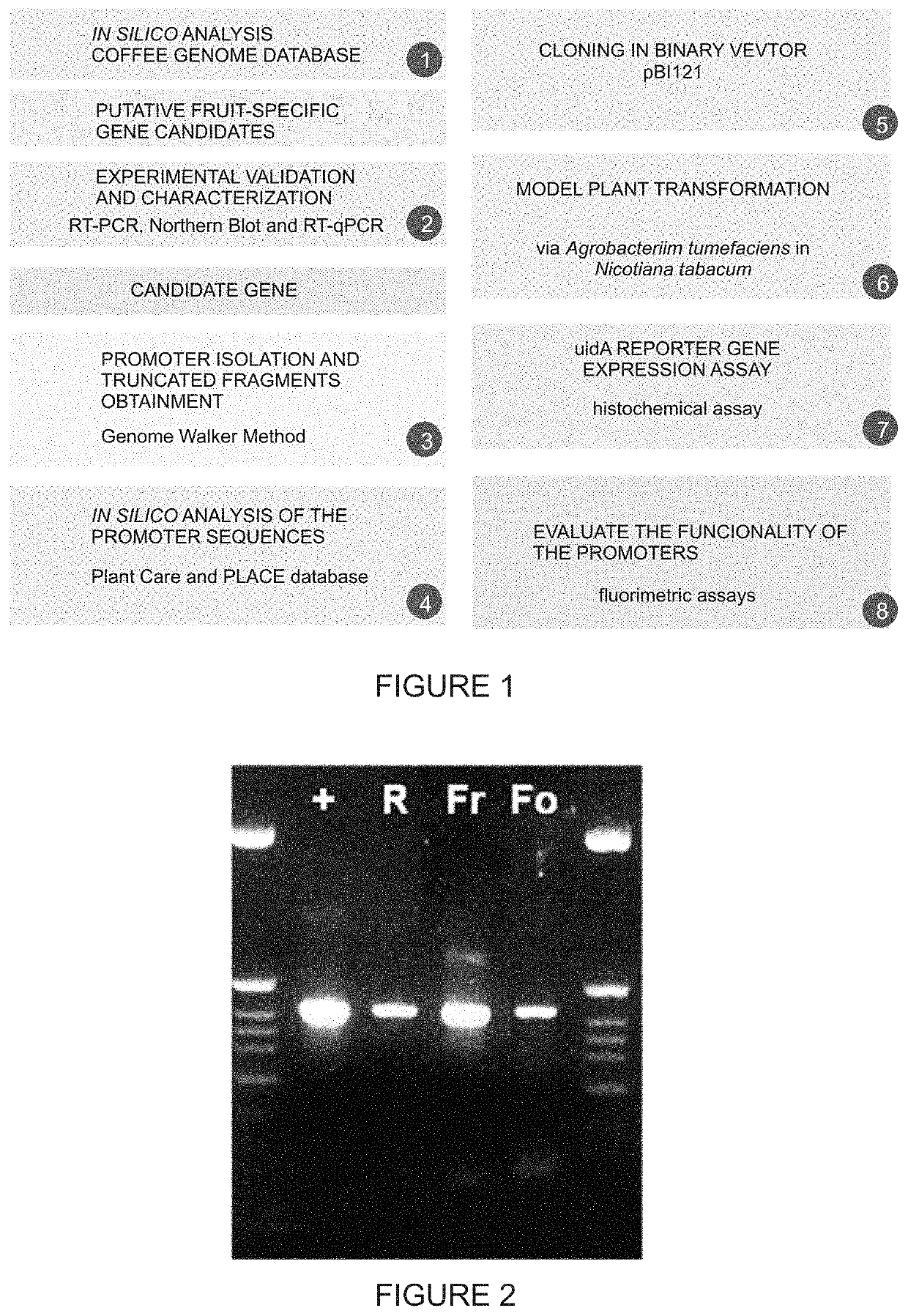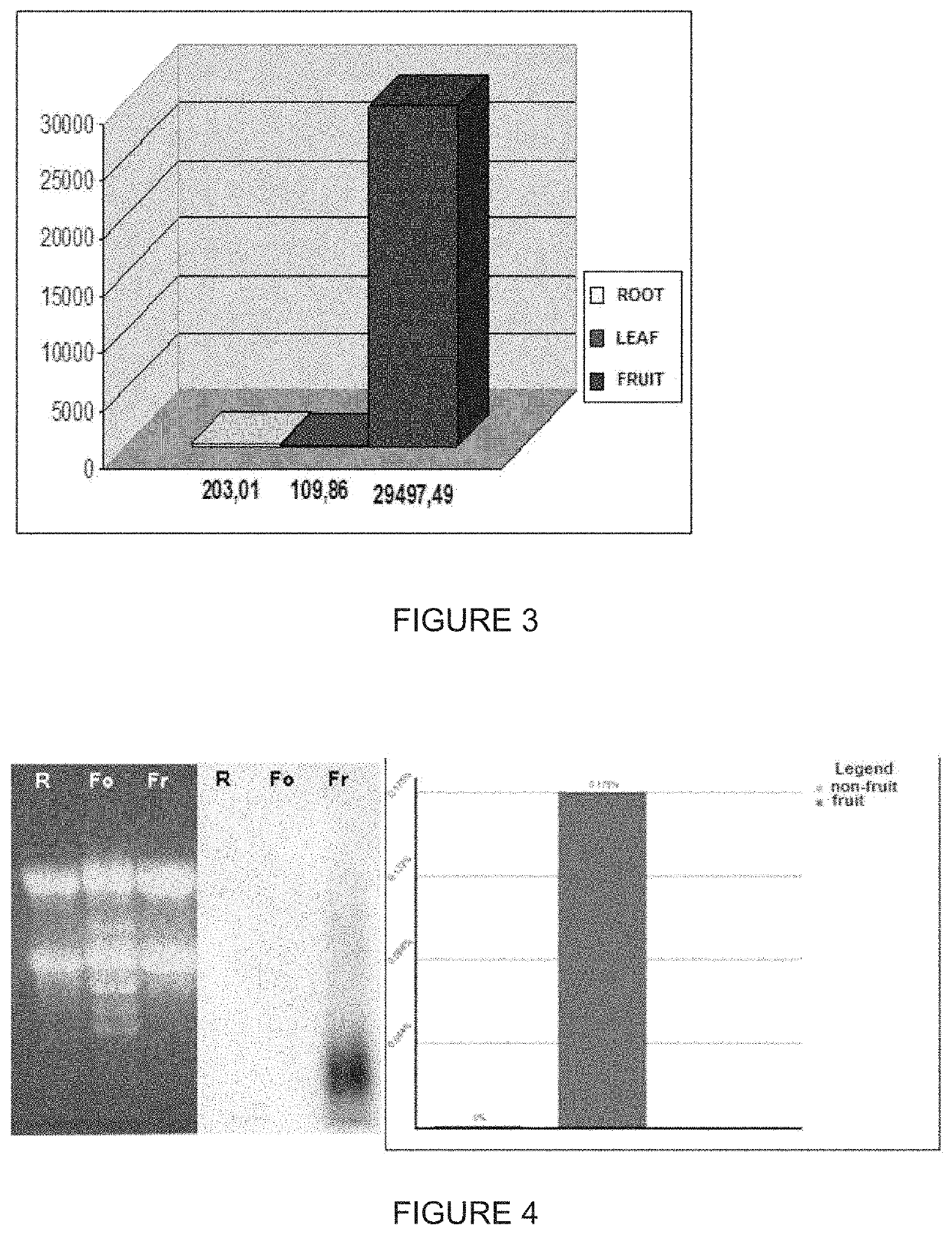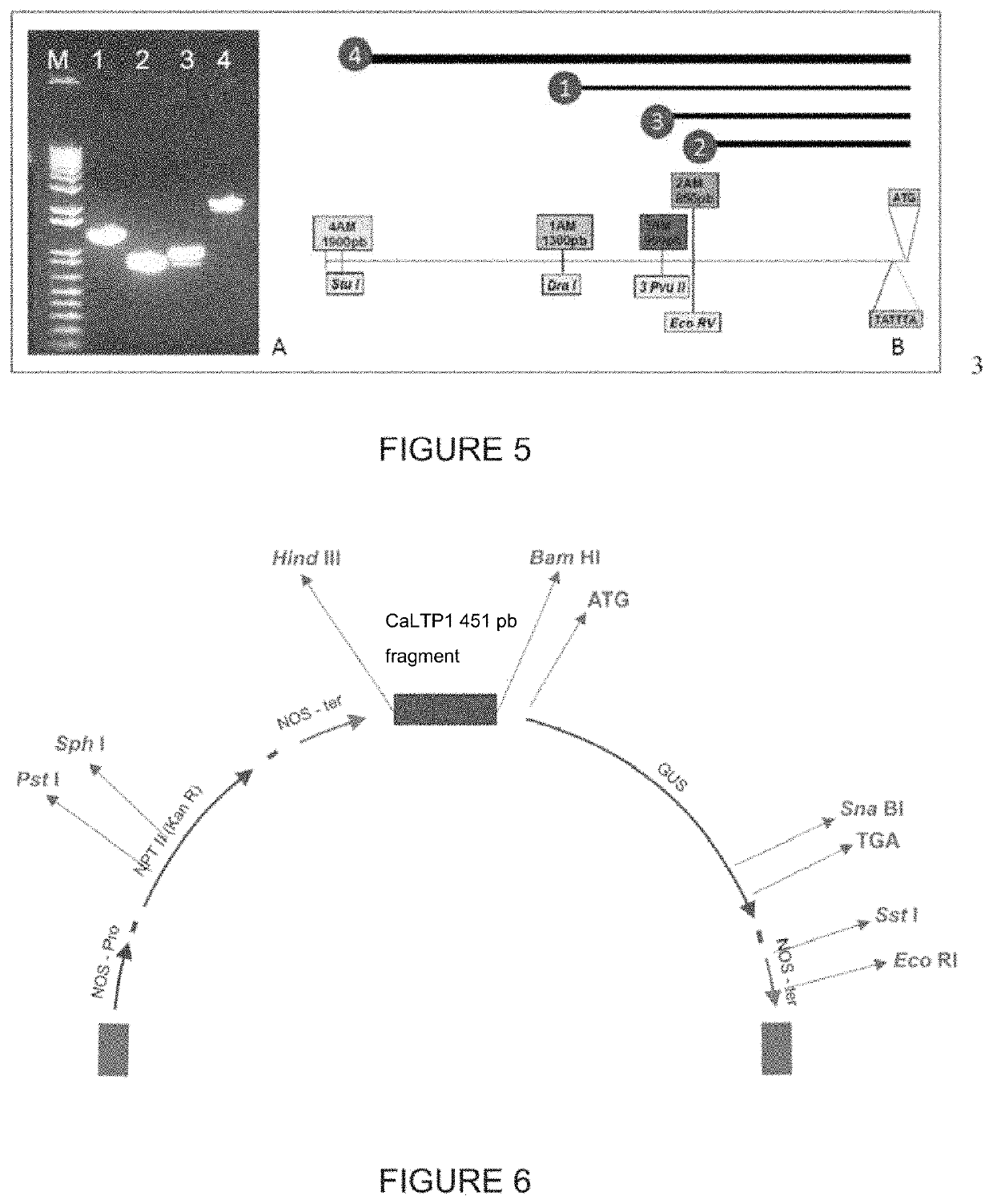Endosperm-specific promoter from the lipid transfer protein 1 gene of Coffea arabica
a technology of lipid transfer protein and promoter, which is applied in the field of biotechnology, can solve the problems of serious unbalance in the environment and agriculture, technological dependence, and productivity decline, and achieve the effects of high nutritional value, high therapeutic value, and increased economic, social and environmental benefits
- Summary
- Abstract
- Description
- Claims
- Application Information
AI Technical Summary
Benefits of technology
Problems solved by technology
Method used
Image
Examples
example 1
Analysis
[0095]The “contigs” of the databank of the coffee genome (VIEIRA, L. G. E. ANDRADE, A. C.; COLOMBO, C. A.; MORAES, A. H. A.; MEHTA, A.; OLIVEIRA, A. C.; LABATE, C. A.; MARINO, C. L.; MONTEIRO-VITORELLO, C. B. Brazilian coffee genome project: an EST-based genomic resource. Brazilian Journal of Plant Physiology, v. 18, p. 95-108, 2006) were organized in two contrasting groups: fruit and non-fruit. These two groups were compared by means of Fisher exact test, and the result indicated 18 “contigs” preferably expressed in the fruit. Then the “contigs” were analyzed for the existence or non-existence of patents.
example 2
tal Validation
[0096]A “contig” called fruit candidate gene 1—CaLTP1 was selected for experimental validation, because it exhibited a high degree of specificity and high level of expression exclusive in fruit, and because it is not protected by a patent, either the gene neither its promoter. After the characterization and validation tests, it was clear that it was the LTP (Lipid Transfer Protein) gene. The experimental validation of the CaLTP1 gene (fruit candidate gene 1) was carried out as described by means of temporal and spatial expression assays using the RT-PCR (Reverse Transcriptase-PCR), Northern Blot; RT-qPCR techniques.
example 3
[0097]For carrying out the RT-PCR assays, RNA samples were extracted from root, leaf and fruit of Coffea arabica cv IAPAR 59, cultivated in the experimental field of the Embrapa Cerrados. The RNA was extracted according to the methodology described by Jones (Jones J D G, Dunsmuir P, and Bedbrook J. 1985. High level expression of introduced chimeric genes in regenerated transformed plants. EMBO J 4: 2411-2418). Then the RNAs were evaluated for their integrity in denaturing gel 1.5%. The root, leaf, and fruit RNA samples were used as template in the formation of cDNA molecules by RT-PCR reactions using oligo dT primers. The cDNAs obtained were used in PCR reactions with LTP1-specific primers for evaluation of tissue specificity thereof. For this purpose, it was developed the following specific oligonucleotides with the aid of the program Primer (frodo.wi.mit.edu / primer3 / ) (Rozen, S e Skaletsky H. J. 2000 Primer3 on the WWW for general users and for biologist programmers. In: Krawetz S...
PUM
| Property | Measurement | Unit |
|---|---|---|
| volume | aaaaa | aaaaa |
| volume | aaaaa | aaaaa |
| volume | aaaaa | aaaaa |
Abstract
Description
Claims
Application Information
 Login to View More
Login to View More - R&D Engineer
- R&D Manager
- IP Professional
- Industry Leading Data Capabilities
- Powerful AI technology
- Patent DNA Extraction
Browse by: Latest US Patents, China's latest patents, Technical Efficacy Thesaurus, Application Domain, Technology Topic, Popular Technical Reports.
© 2024 PatSnap. All rights reserved.Legal|Privacy policy|Modern Slavery Act Transparency Statement|Sitemap|About US| Contact US: help@patsnap.com










